Considering some basement flooring ideas for your basement? Just because basement flooring needs to be chosen carefully doesn’t mean you’re stuck with limited options that are dull and boring. In fact, quite the contrary is true. There is a basement floor option to suit every taste and style. With so many different flooring options on the market, choosing the right one for your home may seem overwhelming. It doesn’t have to be. By paying attention to a few key things, you can be on your way to an amazing basement look!
The flooring you consider for your basement is different from the one you would select for another area of your home. This is because basements are prone to moisture and there is always a chance of a leak or flooding. So the type of flooring you install needs to be carefully selected. In the event that your basement floods, the type of flooring you have should be one that can dry easily without causing damage to your flooring. You want a basement floor that is durable and looks and feels good for as long as possible. Appearance and comfort are two important features you want for your basement flooring, but how your floor handles moisture should be the major deciding factor.
Since basements are below grade, having appropriate flooring will make all the difference. Now, below-grade flooring does not mean that it is subpar flooring. Below grade is a term that is commonly used by contractors. The word “grade” means ground level. Basements, being below ground level, are referred to as “below grade.” Flooring made for below-grade flooring is designed to withstand water vapor and flooding.
Best Qualities of a Good Basement Floor
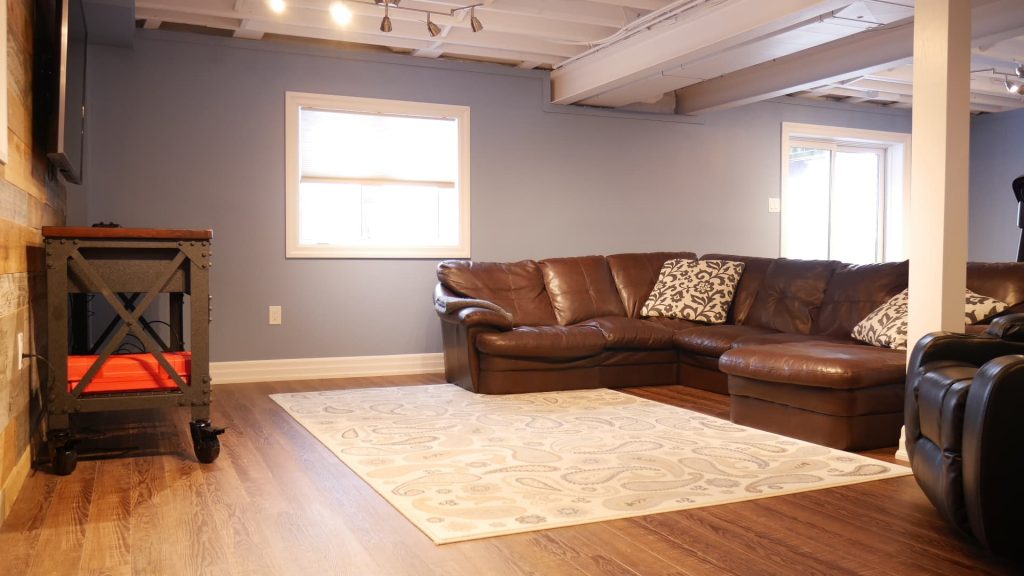
1. Hard material
For basements, hard floors are known to perform far better than soft materials like carpets. Examples of hard materials suitable for basements are tile and concrete. If you have a basement that has some issues with moisture, going with the hard material is the best choice. Soft materials can work, however, this is dependent on whether you have a dry basement or not. The idea of a concrete basement floor may sound off-putting to some, but there are a number of reasons why this may be a great option for your basement.
Many people think of a dull, gray colour when they think of concrete floors, but concrete flooring has evolved over the years and remains one of the most economic types of floors you can install in your basement. Concrete is durable, low maintenance, stain-proof, waterproof and scratch-proof, making it ideal for any basement. Tile is another great option because it comes in a plethora of options and is less likely to be damaged due to a leak or flooding in your basement.
2. Inorganic materials
When it comes to your basement, organic materials are a big no-no. This is because organic material exposed to moisture will attract mold and rot over time. Therefore, your basement flooring will fare much better if it is made from inorganic material. Examples of these include tile, concrete and vinyl. It’s also best to stay away from solid hardwood. Despite it being a hard material, it is 100% organic, and for the reasons listed above, it’s not a good fit for a basement. While mold can grow on inorganic material, flooring made from inorganic material will not rot and deteriorate as organic materials would.
3. Less layers
The more layers the floor has, the greater the chance is of water getting trapped between the layers and causing damage to the floor.
Single-floor layers dry out more easily than multi-layered floors, so the fewer layers you have in your basement floor, the better.
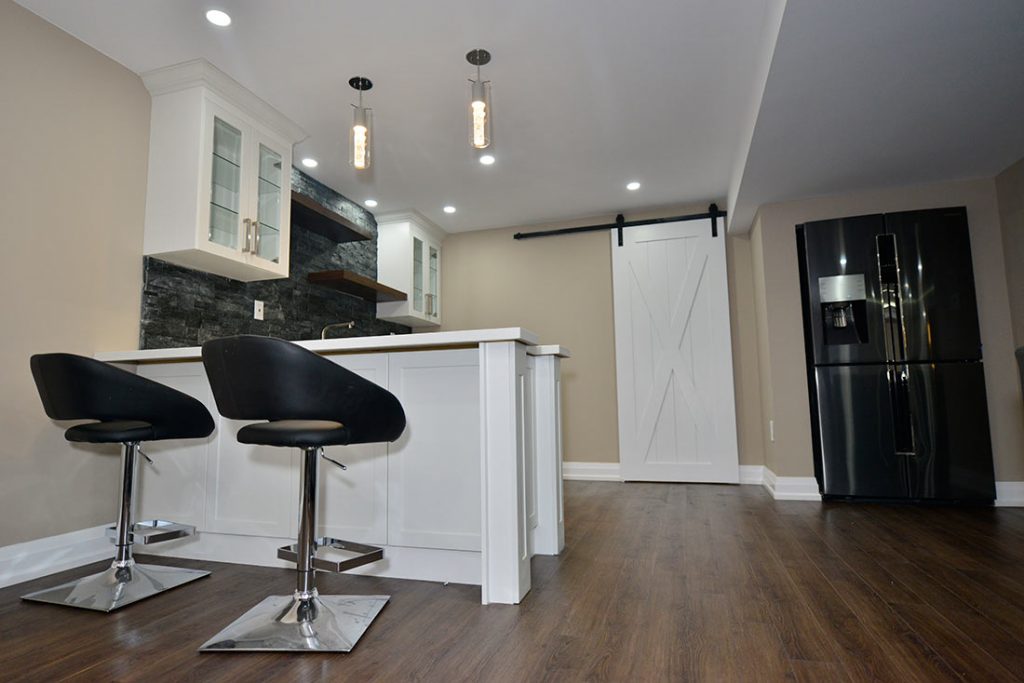
4. Subfloor is raised
There are some below-grade flooring options that require a raised subfloor. This can either be accomplished by installing a subfloor system made from plywood or some other form of subfloor. Having a raised subfloor is beneficial for carpets and laminate floors as well.
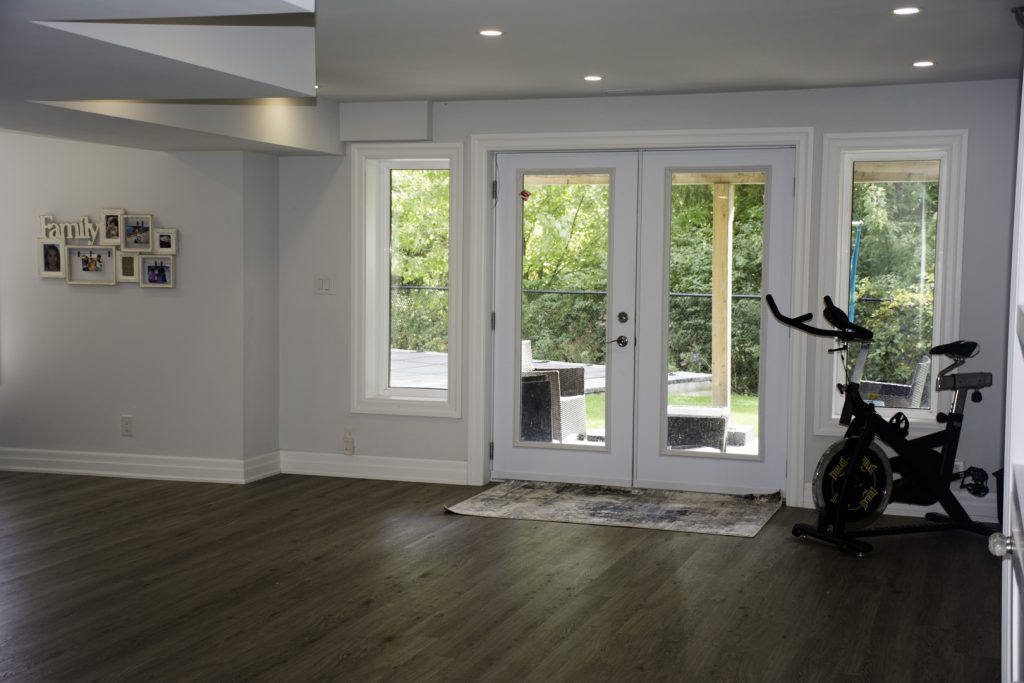
5. Avoids moisture buildup
Despite your best efforts, you may find yourself dealing with a damp or flooded basement. The truth is that water is something you have to deal with when it comes to basements.
In addition to installing the right type of flooring, having other ways to combat moisture, like dehumidifiers, can help the floor dry quicker in the event of a leak or flooding.
What is Engineered Wood Flooring?
Hard flooring comes in a variety of materials. This can present some challenges because sifting through the various options may make it harder for you to make a firm decision on which flooring is best for you. Hard flooring can either be solid or engineered hardwood. This type of flooring is made of layers of hardwood and plywood.
Solid hardwood, on the other hand, is one piece of solid wood that is not layered. Engineered hardwood is available in many varieties that correspond with some of the most popular types of wood like hickory, oak and maple. The size of engineered wood floors is typically between 3/8 of an inch to 3/4 of an inch thick.
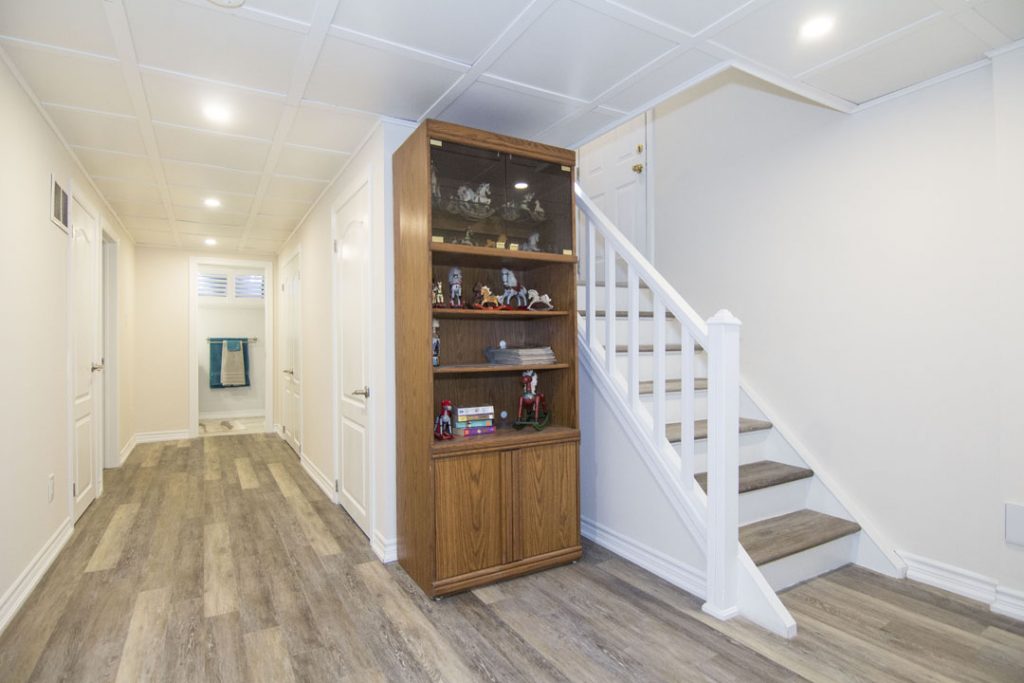
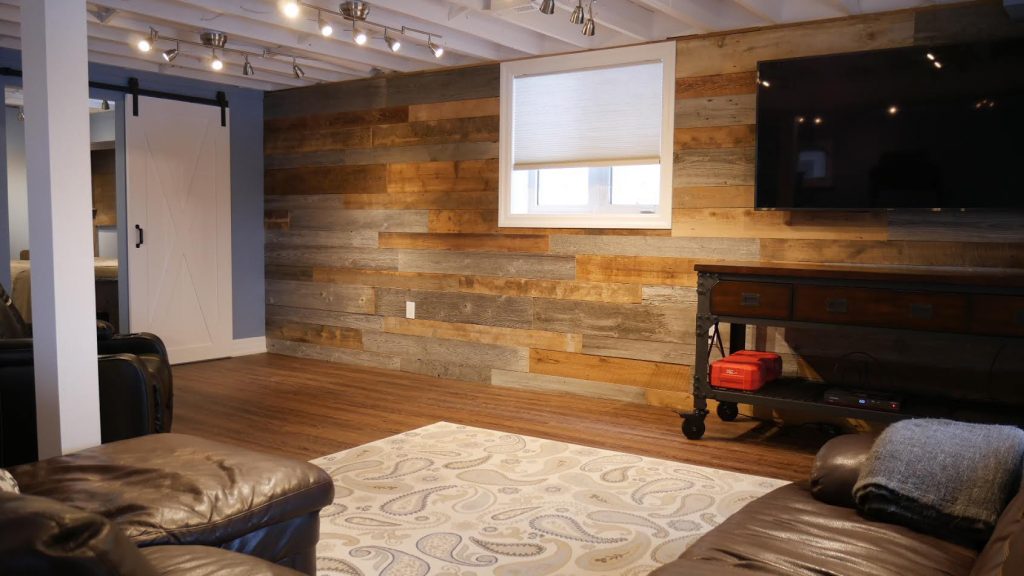
Pros of Engineered Wood Flooring
- Durable – Engineered hardwood is designed to be durable and consists of multiple layers of wood, with each individual layer positioned in a separate direction. This design prevents engineered wood from warping – the way a hardwood floor might warp when exposed to water.. The thickness and quality of the veneer that lies over your engineered wood floor plays a huge part in determining how long your engineered wood floor will last. How you maintain your floor will also have a bearing on its lifespan. Engineered hardwood typically lasts 20 to 30 years.
- Waterproof – Engineered wood floors are designed to be ideal for most grade levels in a home. Seeing that the basement is below ground, a protective moisture barrier is installed in engineered hardwood flooring to combat any moisture.
- Appeal – Veneer is applied to the engineered flooring to make it resemble hardwood flooring. So you can get the same coveted look with engineered wood.
- Low maintenance – Unlike wood floors, engineered hardwoods are easy to care for and maintain. Engineered wood flooring also holds up well in frigid temperatures.
- Variety – You are spoiled for choice when it comes to engineered hardwood. There are so many different varieties and types with multiple finishes that include matte, semi-gloss and high gloss. There are also different surface effects to choose from, for example, hand scraped, wire brushed or distressed.
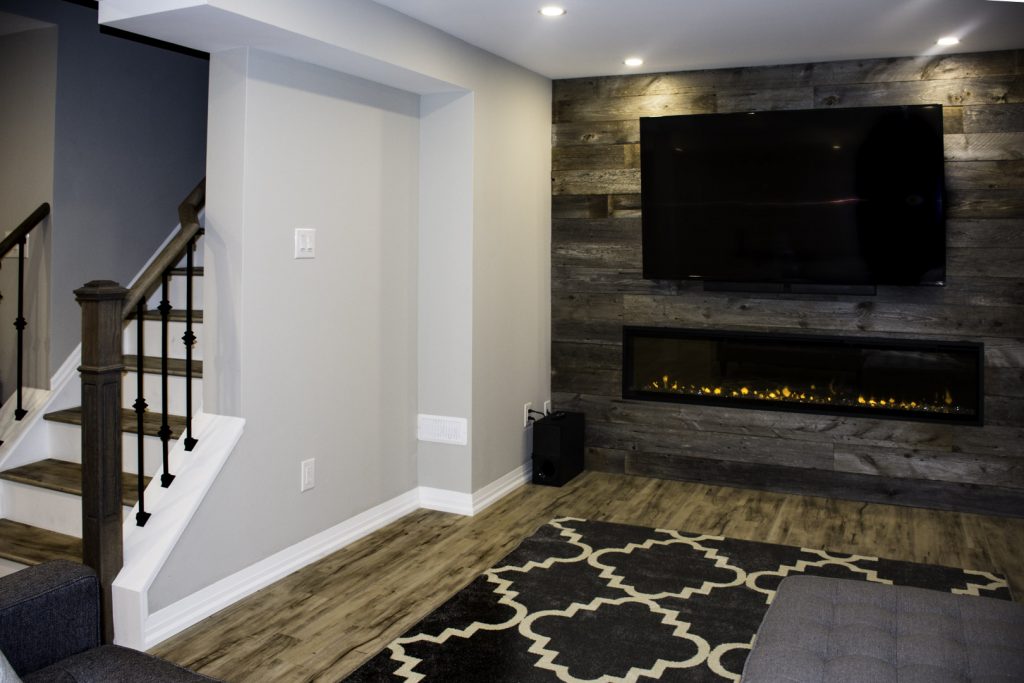
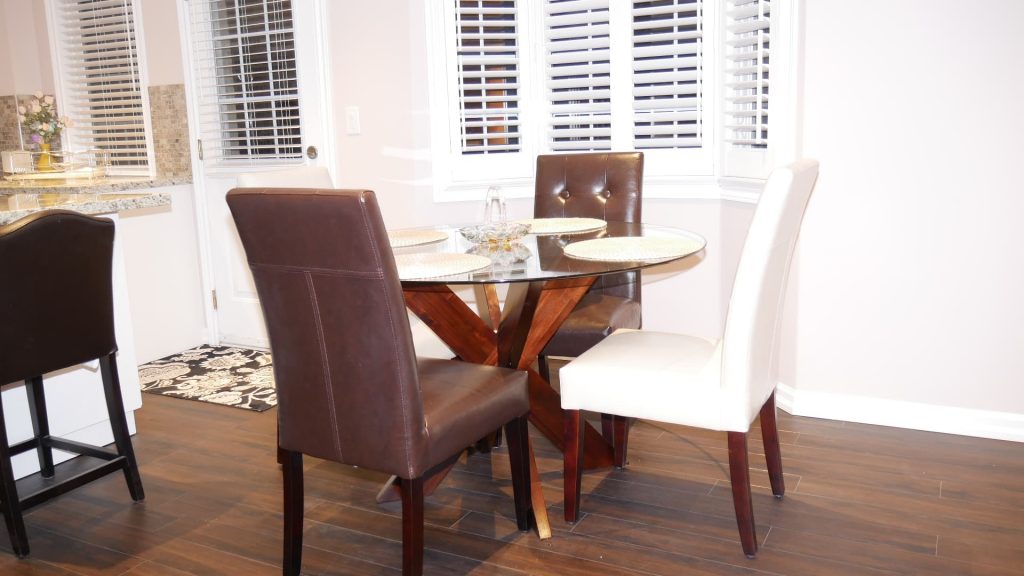
- Easy installation – As long as your basement is free of moisture and a protective moisture barrier has been installed, engineered wood flooring can be installed in any room in your home with no fuss or worry.
- Affordable – Engineered hardwood is less expensive than solid hardwood floors, which means that you can install it in multiple rooms in your home. On average, engineered hardwood typically costs anywhere from $2.50 to $10 per square foot. Hardwood, on the other hand, costs an average of roughly $4 to $12 per square foot.
Cons of Engineered Wood Flooring
- Can be weak – There are some types of hardwood flooring that are not manufactured from quality materials. And as a result, the durability of the flooring is affected. Always make sure that you purchase your engineered wood flooring from a trusted manufacturer that ensures quality.
- May not be refinished – One of the reasons why people like solid hardwood flooring is that they can choose to sand it down and refinish it whenever they feel like giving it a new look. This is not always the case with engineered wood. If the wood veneer is thick enough to sand, you can refinish your engineered wood flooring. This usually requires a veneer that is 3 mm thick. If the veneer on your wood flooring is 1 or 2 mm thick, refinishing may not be possible.
- Not waterproof – Like solid wood, engineered wood is not waterproof. If water is allowed to remain on your floors for a significant amount of time, the flooring will warp.
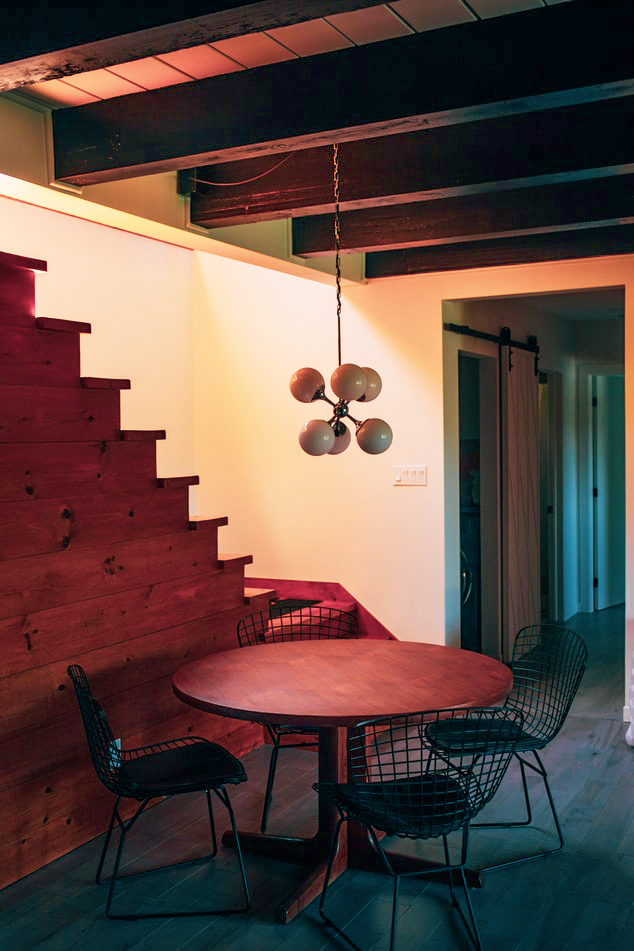

What is Laminate Flooring?
Laminate floors are one of the most popular choices for flooring in modern homes. They are praised for being highly functional floors that are inexpensive. Not only do you see them in everyday homes, they’re also known to be a choice in luxury homes that were once only considered solid wood and engineered wood flooring. The beauty of laminate flooring is that it looks great, feels wonderful, and is one of the best-performing flooring options. Laminate floors consist of particleboard wood base and have both an image layer and a transparent wear layer.
Because of its appeal, this type of flooring can be suitable for any area of your home that does not experience a lot of moisture. Invented in 1977, the popularity of laminate flooring in the market has been steady, but has increased significantly in recent years. The idea behind laminate floors was to utilize waste wood projects and expose them to high pressure, heat, and binding chemicals. This produced a cover for floors that looked nice.
Pros of Laminate Flooring
- Easy to clean – Since laminate floors have a smooth surface that contains no seams, these floors are a breeze to clean. In fact, you don’t even need to use a wet mop for everyday cleaning. A dry one or a broom can easily sweep up the majority of the dirt on laminate floors. And if you need to do a deep clean, simply use a hard surface mopping tool that uses a cleaner instead of water.
- Scratch resistant – Laminate looks delicate but is actually a very tough material. This is an advantage because it gives it a scratch-resistant quality that is perfect for households with pets and or children.
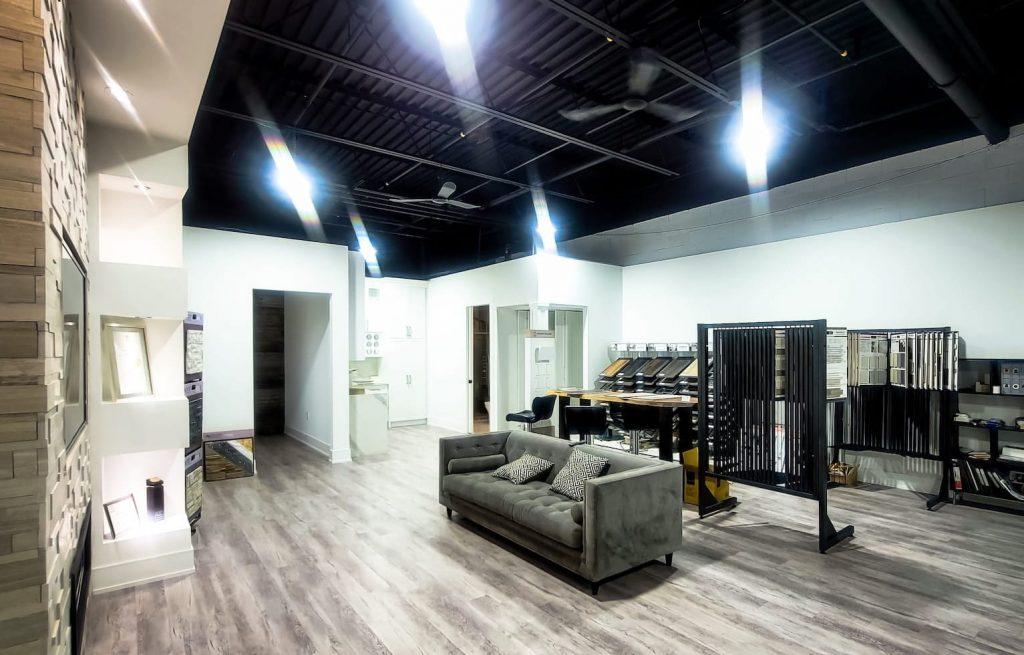
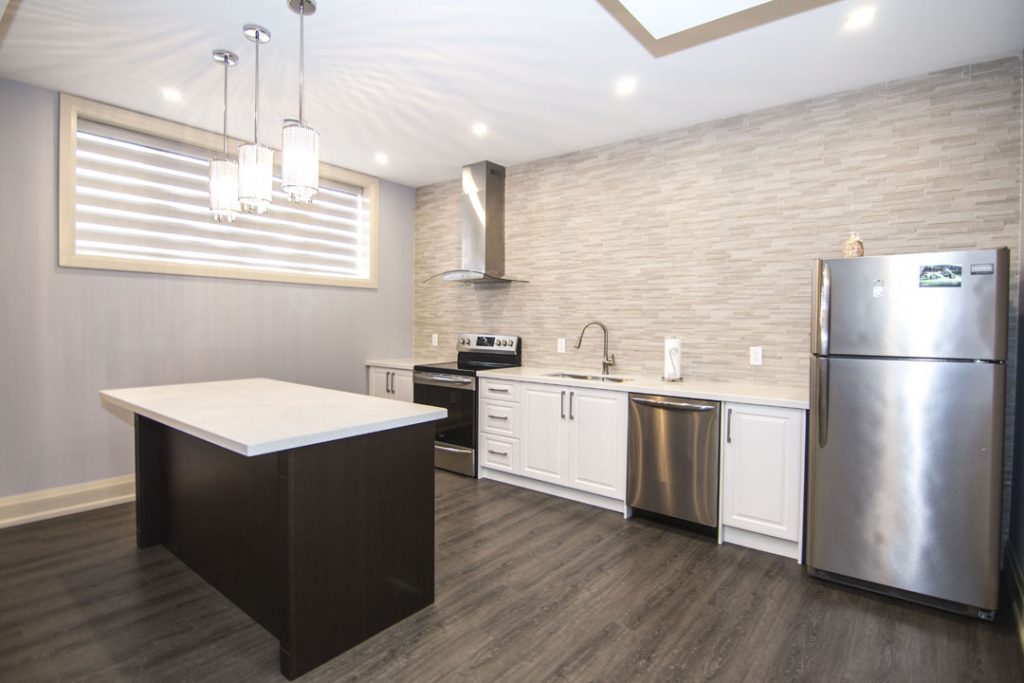
- Affordable – Compared to other types of flooring covers, laminate floors are one of the most affordable options. But it is important to note that some types of laminate flooring can be expensive. Premium laminate floors can have prices that are comparable to solid hardwood or engineered wood floors.
- Appealing – For homeowners who love the look of solid wood but want a more affordable choice, laminate is a great alternative. It looks incredibly similar to hardwood flooring and can be purchased and installed at a fraction of the cost of solid wood.
- Easy installation – One of the great things homeowners like about laminate wood is that it is easy to install, so much so that installation can be done as a DIY project using simple tools. Since it does not need to be nailed down, hardwood is considered a floating floor.
Cons of Laminate Flooring
- Particleboard is sensitive to moisture – Since this is the material laminate flooring is made out of, if laminate is exposed to water for a lengthy period of time, the flooring can swell extensively beyond the point of repair. Technically, laminate flooring is waterproof but it only is so when the boards are joined together perfectly without any seams, and the edges trimmed with waterproof baseboards. If this is not done, laminate flooring can be destroyed when exposed to water. This is the reason why laminate is not the best choice for areas in your home that are prone to moisture like bathrooms, laundry rooms, and kitchens – particularly in front of dishwashers or behind fridges.
- Low resale value – Because laminate is an expensive flooring material, the downside is that if you wish to put your home on the market, having laminate floors alone will not translate to a higher value. So if you are looking into the future and your goal is to redo your floors to increase the value of your home, you may see a greater ROI with other flooring types like solid wood or engineered wood.
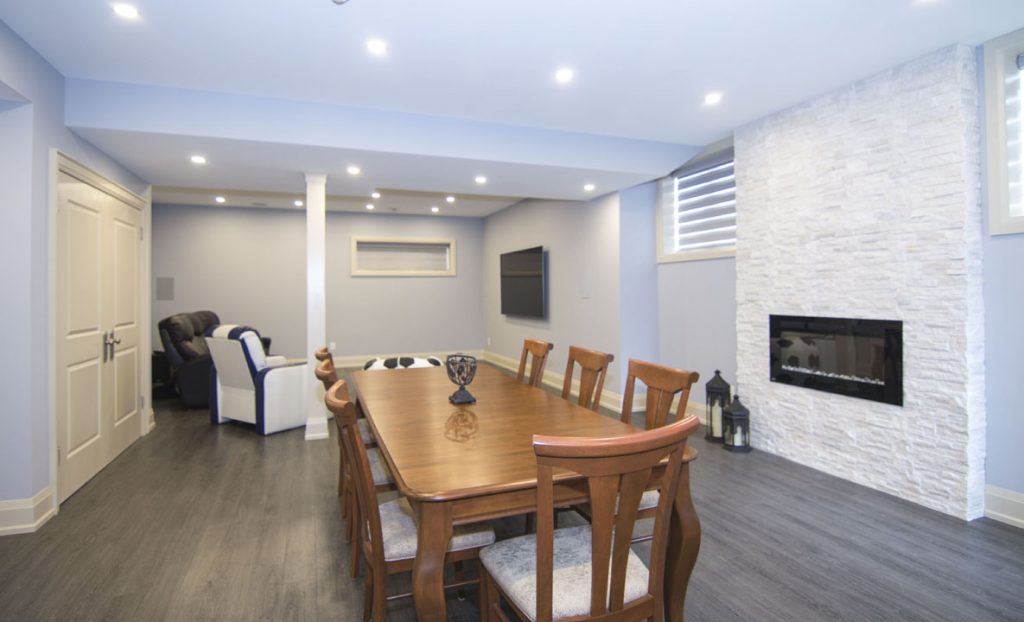
Contact Us
Now that you know the type of floors that are suitable for basements and the pros and cons of each, the next step is to choose the right one for your home. Harmony Basements has a wide selection of both engineered wood and laminate flooring. Our team is happy to help you find the best basement flooring for your unique taste and style.
Got questions? Get in touch with our friendly team of professionals today to learn more about our basement flooring options.
The post Engineered Wood vs. Laminate: Which is the Best Basement Flooring Option? appeared first on Harmony Basements.
https://harmonybasements.ca/engineered-wood-vs-laminate-which-is-the-best-basement-flooring-option/
Did you miss our previous article...
https://manstuffnews.com/basement-ideas/best-ideas-for-your-basement-ceiling
 Backyard GrillingWeekend WarriorsAdvice from DadBeard GroomingTV Shows for Guys4x4 Off-Road CarsMens FashionSports NewsAncient Archeology World NewsPrivacy PolicyTerms And Conditions
Backyard GrillingWeekend WarriorsAdvice from DadBeard GroomingTV Shows for Guys4x4 Off-Road CarsMens FashionSports NewsAncient Archeology World NewsPrivacy PolicyTerms And Conditions
